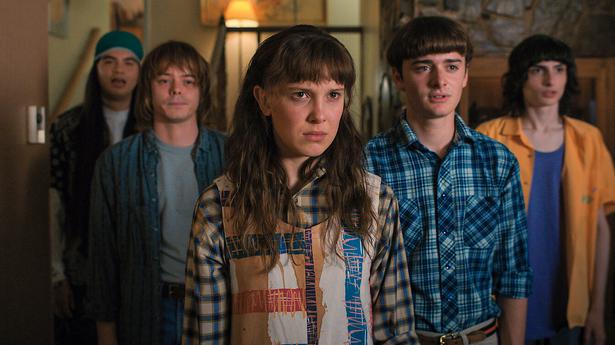At the ongoing exhibition Echoes of the Land, artists use Gond art, Warli paintings and Madhubani techniques to highlight climate change issues
At the ongoing exhibition Echoes of the Land, artists use Gond art, Warli paintings and Madhubani techniques to highlight climate change issues
We all know climate change is real. The extreme weather events — excessive heat, rains, sea-level rise — that the world has been witness to underscore the severity of the environmental crisis. In the face of such a monumental threat, 24 artists have attempted to draw attention to the changing landscape. Titled ’Echoes of the Land: Art Bears Witness to a Changing Planet’, the showcase opening on November 3 is a collaboration between Sarmaya Arts Foundation and Ojas Art Gallery.
Featuring works by contemporary and indigenous artists from different parts of the country, the event highlights our crucial and delicate relationship with Earth. It also comes at a time when experts are gearing up for COP27, the United Nations Climate Change Conference opening on November 6 in Egypt.
“The earth is crying and we as societies and communities need to understand that. You can look at it with multiple perspectives and realise that excessive consumption has led to the depletion of resources, which in turn has led to the alteration of landscapes. The exhibition borders on the spiritual, daily life and a firm belief that we are fundamentally part of nature,” says Paul Abraham, who founded Sarmaya, a digital museum in 2015.
Gond meets Warli
Baba Dev by Ram Singh Urveti
| Photo Credit: Special Arrangement
The exhibition is divided into three parts. The first set depicts the connection between people and the planet; the second section is reflective of apathy and the current status of things; and the last section looks at the possibilities of reversing the damage and participating in restoration. Artist Ram Singh Urveti’s Bada Dev (acrylic on canvas) belongs to the first section wherein he has depicted Bada Dev, a revered deity for Gond-Pardhan tribes. As he is believed to reside in the Saja tree, he is depicted at its centre, with colourful roundels containing his creations like the crab, the earthworm and the spider.
Mayur and Tushar Vayeda, the young generation of Warli artists who grew up in Ganjad, a village in Warli, have created a piece called ‘Kansari: Goddess of Seeds’. Seeds painted on a naturally treated cloth against a cow dung background highlight the significance of preserving our seed diversity. “Having lived in the Warli community, we understand the culture which includes organic food and sustainability. We realise the value of this knowledge and that’s how we decided to make a bridge between our culture and know-how and the outside world,” says Mayur.
An ode to the Sabarmati
Other works include a stark piece depicting the Yamuna river by late Zareena Hashmi; Gopa Trivedi’s art reflecting apathy and hope; and Mayank Singh Shyam’s work draws parallels between human migrationand birds. As for Krishanand Jha, he employs the Madhubani kachni style to hark back to depict a slow, gentle and predictable pastoral life through vivid village scenes, whereas sixteen year-old Sumit Chitara’s parents were practitioners of the art form called Mata ni Pachedi. The show also has an artwork by Sumit portraying the Sabarmati river flowing in full force. “He harks back to his childhood memories and imagines what his parents must have told him. The Sabarmati river was crucial for their art, and the cloth which was painted using mordants had to be washed in the river to gain its colour. Today, they have to go to special water tanks as the river has dried out,” says Paul.
Echoes of the Land will be on view at Ojas Art, Gallery, 1AQ, Near Qutub Minar, Mehrauli, New Delhi, until November 20.

Mahadev ka Netra by Sukhnandi Vyam
| Photo Credit: Special Arrangement
On November 12, Mayur Vayeda will conduct a walkthrough/demonstration of ‘Khala’, a ritual performed for the Goddess of Seeds, Kansari, in the Warli community in the gallery. Khala is a ritual performed before the harvest season where the family and the community get together on a particular spot on their field to pay obeisance to the spirits and Gods/Goddesses. “It’s a gathering of the Gods where we offer food to them and then have a feast. It is a special place in our field where we worship our protector,” explains Mayur. Panel discussions, talks and visits by school children have also been planned during the show.


%20Farming,%20undated%20%20%20Ink%20on%20paper%20H_%2028.8%20cm%20x%20W_%2077%20cm%202021.3.4.jpg)




